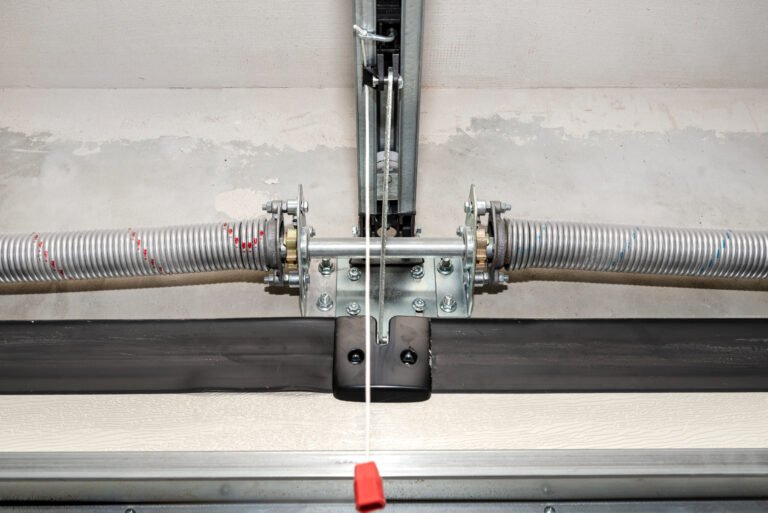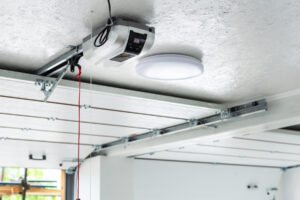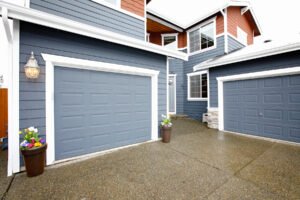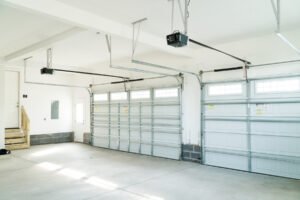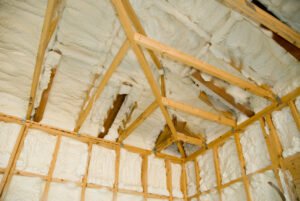Did you know that a garage door opener might imbalance the door and bend or buckle it in the long run? Well, certainly! Garage door openers have small, sleek arms and cannot bear the tension and weight alone. Thus, they need the right garage door spring to harmonize the shutter’s weight and make it easy to operate.
Springs are vital garage door parts that match the friction of the door opener, supply horsepower, and lift the door easily. However, these are not universal and have different mechanisms for different garage door types.
So, today, we’ll discuss the pros, cons, costs, and operations of different types of garage door springs and help you find the right spring for your garage door!
What is a Garage Door Spring?
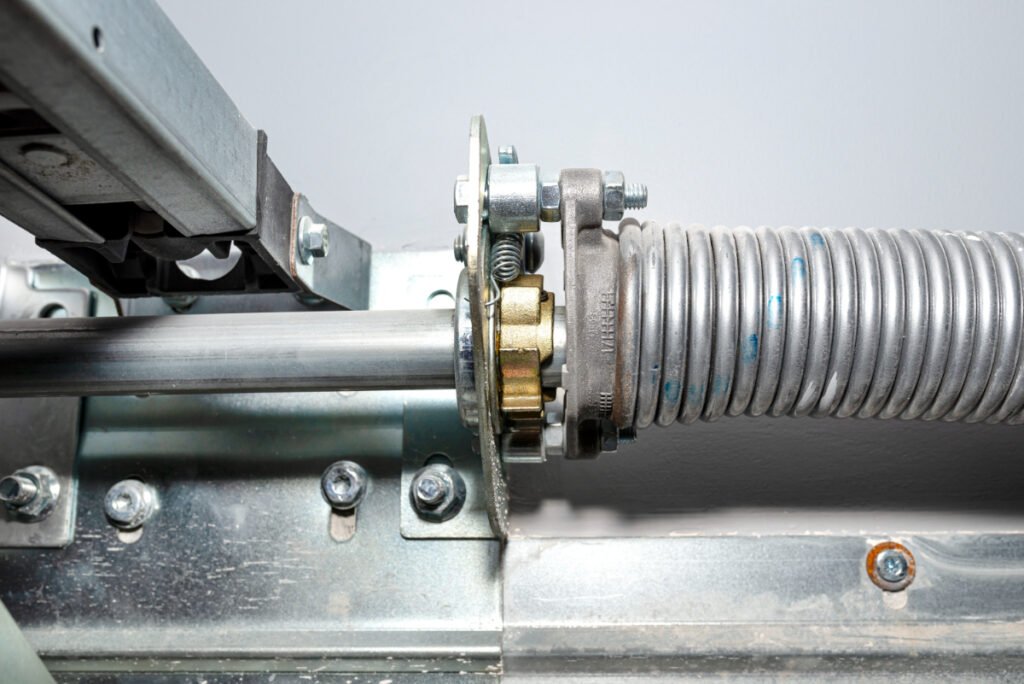
Garage door springs are high-tension mechanical devices located on the header above the garage door or the upper tracks of the opener. These springs stretch or recoil and control all the cables, pulleys, and hooks that allow the garage shutter to open or close easily. These balance the shutter’s weight and prevent wear and tear.
Different Types of Garage Door Springs for Optimal Door Operations
Each garage door spring has a different installation, mounting, purpose, and size and suits different doors based on their mechanism and frequency of use.
Let’s analyze the different garage door springs available in the market – Torsion and Extension springs and help you make a wise decision.
Torsion Spring System
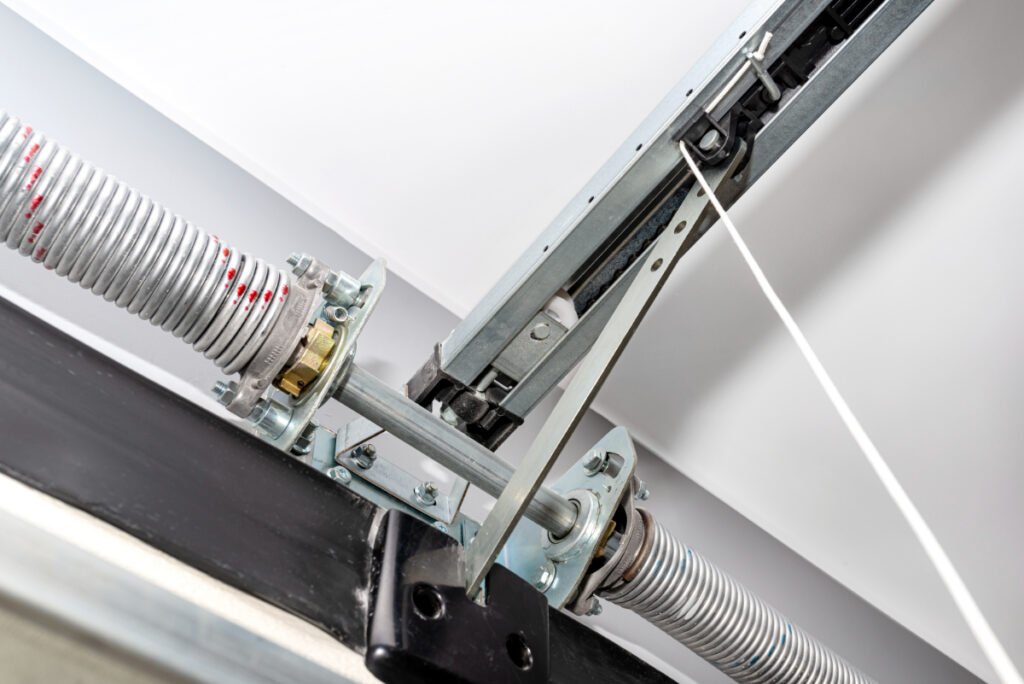
Location: Garage door torsion springs are mounted above the garage door on a separate metal plate or torsion shaft. Smaller garage doors might have a single spring that runs from the center of the shaft, but heavy-duty or commercial doors have a left-winding and right-winding spring that operates from both sides.
How Does It Work: The garage door torsion spring forces the torsion shaft to expand and extends its cables to a coil at the bottom of the garage door. Now, the spring unwinds and opens the door when you activate the garage door opener and recoils to close the door.
A torsion spring system uses a torque or rotating force to operate the door and comes with a fixed set of active coils and a safety cable that prevents the door from buckling. These springs spin at an equal rate, maintain equilibrium in the shaft, and aid noise-free door operations.
Best Preferred For: Light-weight steel doors, any roll-up or overhead door, or any tilt-up or residential garage door.
Standard Sizes: 1 ¾”, 2”, 2 ¼”, and 2 ⅝ inch torsion springs for residential garage doors and heavier, 3 or 3 ¾ inch springs for commercial garage doors.
Prominent Materials: Cold-rolled Spring Steel, Stainless Steel, Alloy Spring Steel, and Copper or Nickel Alloys.
Cost: $75 – 150, including labor, installation, and materials
Pros:
- Last longer and complete about 15000 – 20,000 cycles.
- Fewer Parts and Less Maintenance.
- Lesser chances of Spring Break.
- Require Fewer Adjustments and is Easy to Use.
- Broken springs do not fly out in the garage and remain enclosed with the shaft.
Cons:
- More Expensive.
- Take up space above the Garage Door.
Types of Torsion Springs Based on Installation:
There are various types of torsion garage door springs, based on how they are mounted on the door and the mechanisms they operate on.
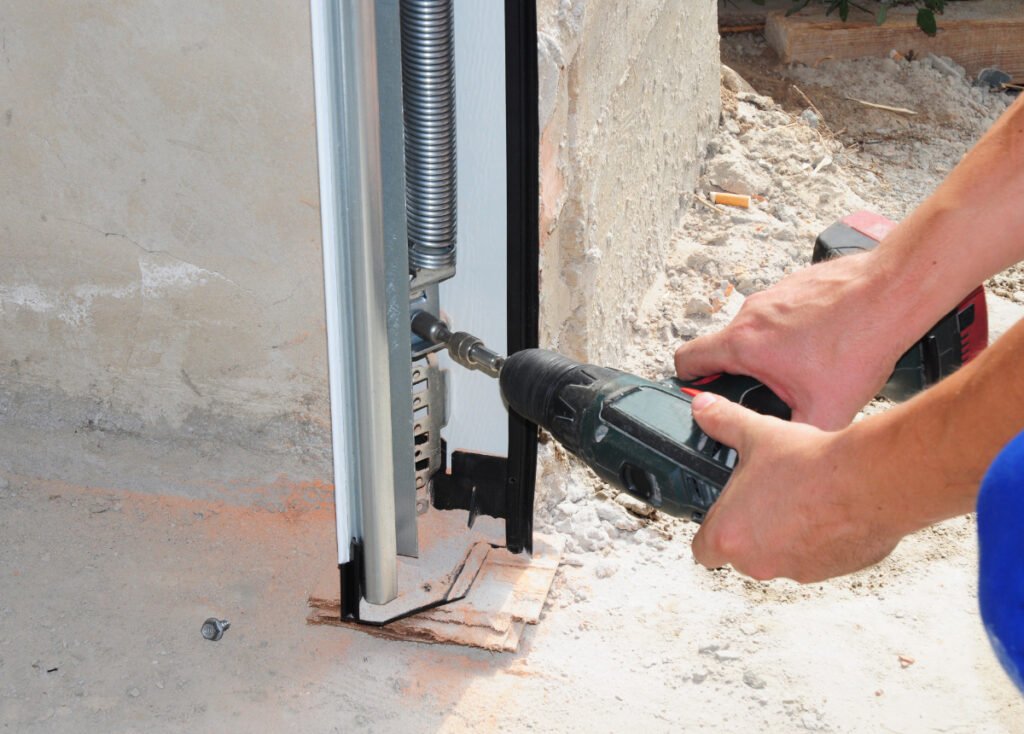
1. Standard Torsion Spring
It is mounted on the edge of the torsion shaft and has a spring anchor bracket that balances the door properly and prevents it from falling. Generally, a residential garage door works well with one standard torsion spring, while a commercial door needs two.
2. EZ – Set Torsion Spring
This spring is located on either side of a wider, 2-car garage door and has a coupling rod in the center to balance the weight. Moreover, these have a winding cone in the middle of the shaft and do not buckle, break or fall easily.
3. Wayne Dalton Torsion Spring
These high-tension springs come with a winder and a winding cone that connects to an electric drill and recoils smoothly at high speed. Plus, these have a center-support bracket that connects the cables and supports the door from all sides.
4. Commercial Torsion Spring
This spring comes in four setups – Linear, Duplex, Triplex, or Mixed. These weigh more and are more sturdy, but have a wider shaft of 1 ¼” diameter that takes more space. Additionally, these have a groove joint along the length of the torsion shaft that holds onto the cables and prevents them from spinning loose.
Generally, linear setups are used for wider, 2-3 car, residential garage doors, but these require more pulleys and hardware that cost more in the long run.
In contrast, duplex or triplex shafts are more compact and supply the extra torque necessary for commercial applications. Mixed setups are used for hefty doors with heavier foam insulation.
5. Steel Rolling Door Torsion Spring
These high-tension springs are mounted inside the barrel of a steel rolling door and have two head plates and anchor brackets that add more pressure to the shaft, rotate it and operate the door efficiently.
Plus, these even have a chain hoist that connects the opener to the garage spring and prevents malfunctioning.
6. TorqueMaster Springs
Torque Master is a spring system for Wayne Dalton doors that uses concealed cables, hollow shafts, high-tech gears, and power drills to wind and unwind the spring.
It makes door operations faster, smoother, and more efficient. Plus, they are enclosed within a torsion shaft and have no risk of falling, breaking, or malfunctioning.
Extension Springs
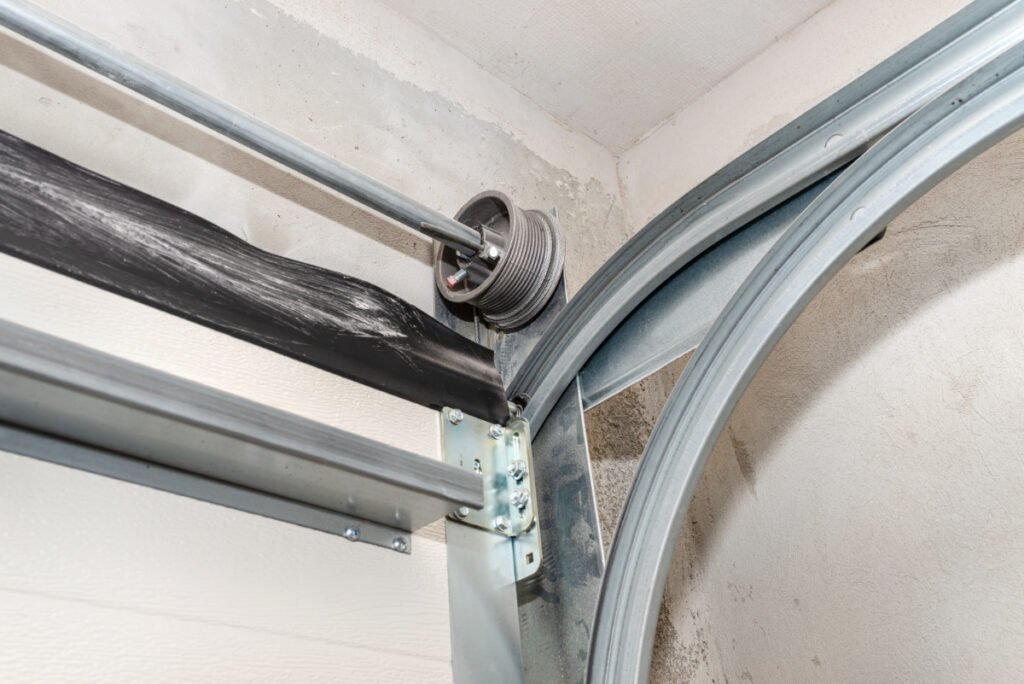
Location: Extension garage door springs are mounted on the horizontal tracks along both sides of the garage door and have a connecting metal pulley that maintains equal pressure along both sides.
How Does It Work: Extension springs have metal pulleys that release them and add more pressure to the garage door cable coils at the bottom. In return, these unwind, distribute the pressure uniformly, and open the door. The cables recoil back and extend the springs again to store energy for door opening.
Any garage door extension spring has a counterbalance that balances the door and adds more pressure to the extension springs. It even comes with a safety cable that prevents bursts and holds a broken spring in place.
Moreover, extension springs operate independently and increase the overall lifting speed but can break easily and malfunction.
Best Preferred For: An extension spring works best with sectional and one-piece garage doors, but you can also use them for traditional overhead and roll-up doors.
Standard Sizes: 25” extension springs for 7-foot doors and 27” door springs for 8-foot doors.
Prominent Materials: Hard-drawn Stainless Steel, Chrome Silicon, Phosphorous, Bronze, and Copper or Nickel Alloys. For greater durability, you can even use oil-tempered springs.
Cost: $50 – 100, including labor, installation, and materials
Pros:
- Affordable.
- Don’t use much space and allow a clear attic.
- Adds a counterbalance that doesn’t bend the garage door.
Cons:
- Require more parts and a Longer Cable.
- Might Burst and fly on Breakage.
- They have a shorter lifespan than conventional Torsion springs.
Types of Extension Springs Based on Installation:
1. Open Loop
It is a galvanized spring with a single coil and an open-wire end that fits both sides of the pulley and provides maximum operation control. This garage door spring is not concealed, and you can quickly repair it without disassembling the pulley and the bolt.
However, you’ll need to replace the entire spring if even one part breaks or corrodes.
2. Double Loop
Double-loop extension springs have looped coils and bends that attach directly to the pulley and eye bolt, thus providing an even weight distribution at both ends.
They are stronger, sturdier, and lift the door much faster than open-loop wires. However, they are directly welded at the ends and might incur additional spring repair costs.
3. Clipped Ends
Clipped end extension springs transfer the weight uniformly to all garage door parts and don’t stress the spring alone, making them more durable and long-lasting. Moreover, these are heavy-duty and support up to 200-pounds of weight but are the hardest to install, repair or replace.
4. Sectional Extension Springs
A sectional extension spring sits directly above the door’s horizontal tracks. It has an S-clip that connects directly to a pulley fork and pulls the cables. Thus, it counterbalances the door weight, stretches the springs, and makes door opening mechanical and easier.
For greater support and durability, you can directly fasten the sectional extension springs to a beam, stanchion, or track in the garage frame.
Quick Comparison of Torsion and Extension Springs
| Parameter | Torsion Springs | Extension Springs |
| No. Of Cycles | 15000 – 20,000 | 10,000 – 15,000 |
| Location | Above the Garage Door | On the Roller tracks at the Side |
| Cost | Expensive | Affordable |
| Spring Mechanism | Springs twists and unwinds to open the door | Springs recoil and contract to open the door |
| Durability | High | Low |
| Ease of Garage Door Spring Repair | Low | High |
| Spring Repair Cost | Springs twist and unwinds to open the door | $50 – 100 |
Why Are Garage Door Springs Color Coded?
Color codes usually indicate the weight-carrying capacity, load-bearing, and durability of garage door springs and help us determine the number of springs required to lift heavier garage doors.
But you can limit the number of springs and add garage door batteries for smoother operations. Let’s look at this garage door spring color code chart to understand the weight-carrying capacities of different springs w.r.t color.
| Color | Weight Carrying Capacity |
| Tan | 100 lbs |
| White | 110 lbs |
| Green | 120 lbs |
| Yellow | 130 lbs |
| Blue | 140 lbs |
| Red | 150 lbs |
| Brown | 160 lbs |
| Orange | 170 lbs |
| Gold | 180 lbs |
| Light – Blue | 190 lbs |
Can I Replace Torsion Springs with Extension Springs?
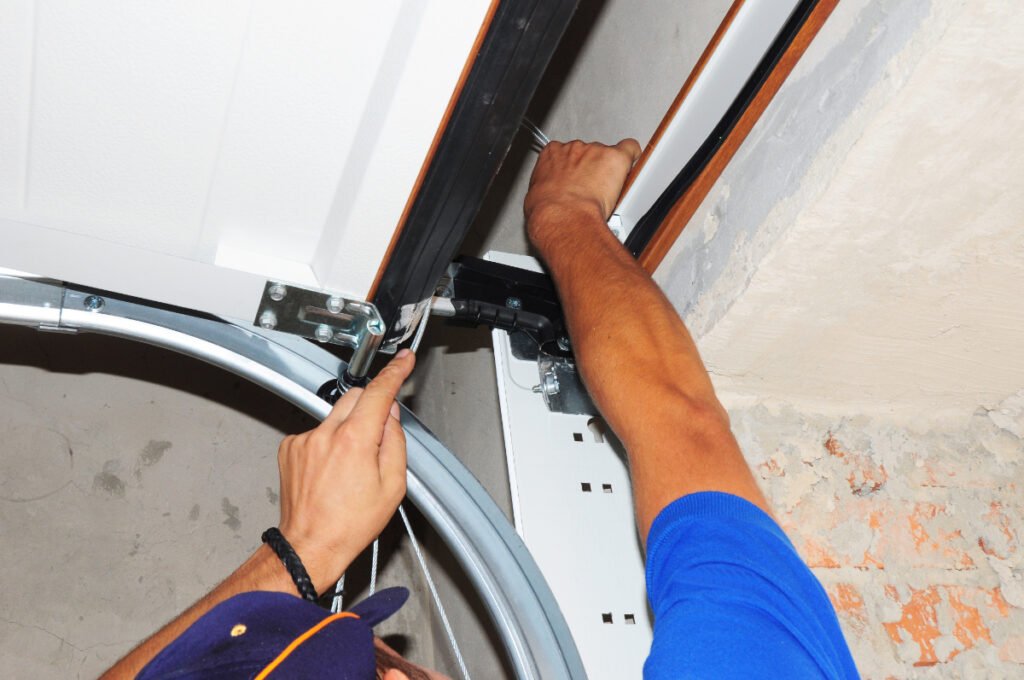
Yes, you can replace torsion springs with extension springs. To do so, cross-check both springs’ weight-carrying capacity and use a similar color code. Generally, black indicates right wind springs, whereas red indicates left wind springs.
Now, arm yourself with a socket wrench, a screwdriver, and some mounting plates, and set to work!
Things you’ll need:
- Extension Pulleys and springs according to your door weight
- Screw-driver
- Socket Wrench
- Protective Eye-wear
- Measuring Tape
Step 1: Remove the safety cable from the existing torsion springs and uninstall the main drum bar and the center-bearing plates that hold onto your torsion springs.
Step 2: Slide the torsion plates out of your roller track and replace them with the extension pulleys. Measure the length of your spring and check if it fits properly in the roller tracks.
Step 3: Lift your garage door and mount the extension springs onto the roller tracks. Now, take a screwdriver and hoist all the safety cables back in place.
Step 4: Finally, check the garage door’s balance and complete your garage door spring replacement.
What Happens If You Use the Wrong Garage Door Spring?
Garage door springs are often mounted according to the height of the garage door and help nullify the extra stress on the garage door opener. Using the wrong-sized garage door spring might disrupt the opener’s optimal functioning and bend your garage door.
Plus, it might malfunction and cause any of the effects listed below.
- Damage the Garage Door Opener: Larger springs might force-open the garage door and roll up or rebound quickly, burning out the opener quickly.
- Prevent the Door From Opening: Wrong springs might not open the heavier doors that weigh more than 250 pounds and won’t coordinate with the opener. Moreover, they’ll burst open if you try to force open the door and might damage your car.
- Dis-align the door from its Tracks: Wrong springs might pull or push the door away from its tracks and cause significant damage.
Tips for Picking the Right Spring for Your Garage Door
- Pick a wire with 10-20 coils and refer to the manufacturer’s wire measurement chart to pick the right size for your garage door.
- Measure the spring’s inside diameter and pick a tight spring, around ⅙ inch in diameter, for efficient torque.
- Measure the spring length to the nearest ¼ inch and buy longer springs for efficient operations.
- Always match the color codes with the weight of your garage door.
- Pick extension springs for side-moving sectional and sliding doors while going with torsion springs for overhead doors.
Are Torsion Springs Color-Coded?
Yes, Torsion springs are color-coded in Red and Black spots at their upper coils. While Red spots indicate left wind springs, Black spots imply right twisting torsion springs.
Which Is Better, Torsion Or Extension Spring?
Torsion springs are stronger, sturdier, and more balanced than extension springs and last about 10,000 cycles. However, they are expensive, and thus, you could go for extension springs if budget is a constraint.
Can You Replace the Garage Door Springs Yourself?
You can replace extension springs on your own, and all you need to do is remove the cables, replace the spring, and remount it back again. However, torsion springs are tricky to replace and can lash out and burst under tension. So, it’s always advisable to seek professional help.
Can I Reuse a Broken Garage Door Spring?
No, broken garage door springs should never be reused as they might burst and put more pressure on your garage door opener. Similarly, broken springs will have a lesser weight-carrying capacity and might imbalance the door.
Garage door springs are a smart tool for optimal garage door operations, reducing overall wear and tear and extra stress from your openers. There are mainly two types: Torsion and Extension, and you can choose the best one by analyzing their overall features!
Like springs, hinges are another crucial vital element of garage door operations. Choosing the hinge for your garage shutter is a must for smooth movement. So, learn about different types of garage door hinges in my next blog!

